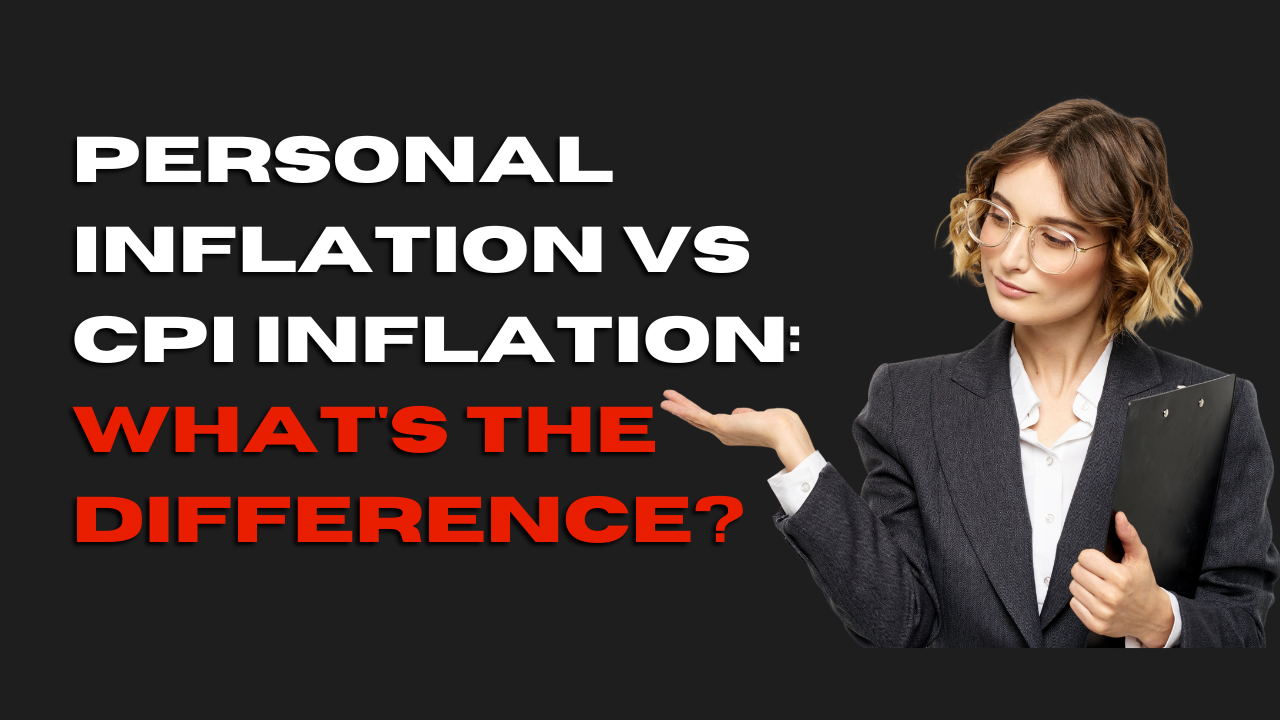Personal inflation and CPI inflation are two types of inflation measurements used to track changes in the cost of living. CPI inflation, or consumer price index inflation, is a standardized measure of inflation that tracks changes in the prices of a basket of goods and services typically consumed by urban households. Personal inflation, on the other hand, is a measure of inflation based on an individual’s personal spending habits and consumption patterns. It can vary widely from person to person, depending on factors such as lifestyle, geography, and income level.
Introduction
Inflation is the rate at which prices for goods and services increase over time, reducing the purchasing power of money. There are several ways to measure inflation, including the widely used consumer price index (CPI) and personal inflation. While CPI inflation is a standardized measure, personal inflation is based on an individual’s specific spending habits and consumption patterns. Understanding the differences between these two measurements is important for financial planning and managing personal finances effectively.
Understanding CPI Inflation
CPI inflation is a measure of inflation that tracks changes in the prices of a basket of goods and services typically consumed by urban households. The basket includes a wide range of items, such as food, housing, clothing, transportation, healthcare, and education. The CPI is calculated by comparing the current cost of the basket of goods and services to the cost in a base year, which is typically set to 100.
The CPI is widely used as a benchmark for measuring inflation and is used by governments, central banks, and businesses to make economic decisions. The CPI is published monthly or quarterly, depending on the country, and is used to calculate various economic indicators, such as real wage growth, real GDP, and inflation-adjusted interest rates.
Understanding Personal Inflation
Personal inflation, also known as individual inflation, is a measure of inflation that is specific to an individual’s spending habits and consumption patterns. Personal inflation takes into account the fact that different people have different spending habits, preferences, and lifestyles, and therefore experience inflation differently.
Personal inflation is calculated by tracking the changes in prices of the specific goods and services that an individual consumes on a regular basis, such as groceries, rent, utilities, healthcare, and transportation. By tracking these prices over time, an individual can get a better understanding of their personal inflation rate and how it may be impacting their purchasing power.
Personal inflation is particularly relevant for retirees and other individuals on fixed incomes, as they may be more sensitive to changes in the prices of goods and services that they consume regularly. By tracking their personal inflation rate, they can make informed decisions about their spending and adjust their budget accordingly.
Differences Between CPI Inflation and Personal Inflation
The main difference between CPI inflation and personal inflation is that CPI inflation is a broad measure of inflation that reflects the changes in prices of a basket of goods and services consumed by a typical household, while personal inflation is a more specific measure that reflects the changes in prices of the goods and services that an individual consumes.
Other differences between CPI inflation and personal inflation include:
1. Basket of goods and services: CPI inflation is based on a basket of goods and services that is representative of the average household’s consumption patterns, as determined by government agencies. Personal inflation, on the other hand, is based on the goods and services that an individual consumes, which may differ significantly from the average household’s consumption patterns.
2. Weighting: The items in the CPI basket are weighted according to their importance in the average household’s budget, while personal inflation is based on the individual’s own weighting of the goods and services they consume.
3. Accuracy: CPI inflation is considered to be a more accurate measure of inflation as it is based on a large sample size and is subject to regular reviews and updates. Personal inflation, however, may be less accurate as it is based on an individual’s perception and may be subject to biases and errors.
4. Relevance: CPI inflation is a widely used measure of inflation that is used by policymakers, economists, and investors to make decisions and forecasts. Personal inflation, on the other hand, is more relevant to individuals who want to track their own inflation rate and make informed decisions about their spending.
Overall, both CPI inflation and personal inflation have their own strengths and weaknesses, and individuals may find it useful to track both measures to get a better understanding of how inflation is affecting them personally.
Why Personal Inflation Matters
Personal inflation matters because it can significantly impact an individual’s financial planning and decision-making. While CPI inflation is a general measure of the increase in prices for a basket of goods and services, personal inflation takes into account an individual’s specific spending habits and lifestyle choices. For example, if an individual spends a significant portion of their income on healthcare, a rise in healthcare costs will have a greater impact on their personal inflation than on CPI inflation. By tracking personal inflation, individuals can better plan and adjust their budget and investment strategies to meet their financial goals.
Implications for Financial Planning
Tracking personal inflation is crucial for effective financial planning. Understanding one’s personal inflation rate can help in creating a more accurate budget and investment plan that reflects individual spending patterns and needs. It can also help in determining the amount needed to maintain the same standard of living in the future.
For example, if an individual’s personal inflation rate is higher than the CPI inflation rate, their expenses may increase more quickly than anticipated, leading to a shortfall in savings or investments. This may require adjusting their investment portfolio to include higher-return investments or adjusting their spending patterns to stay within budget.
Additionally, tracking personal inflation can help in identifying areas where expenses can be reduced or optimized, such as switching to a more affordable healthcare plan or cutting back on discretionary spending. By being aware of personal inflation, individuals can make more informed financial decisions and better plan for their financial future.
Conclusion
In conclusion, personal inflation and CPI inflation are both measures of the increase in the cost of living, but they differ in their scope and relevance to individuals. While CPI inflation is a widely used measure of the overall inflation rate in the economy, personal inflation reflects the specific price changes that affect an individual’s lifestyle. As personal inflation can have a significant impact on an individual’s purchasing power and financial goals, it is important to consider it when making financial plans and investment decisions. By keeping track of their personal inflation, individuals can better prepare themselves for future expenses and ensure that their financial plans remain relevant to their needs and circumstances.
Also Read:
- Investment Taxation: Understanding Capital Gains, Dividends, and More
- The Impact Of Inflation On Investments
- The Future of Taxation: Trends, Challenges, and Opportunities Ahead
- Tax Planning Strategies for Small Business Owners and Individuals




